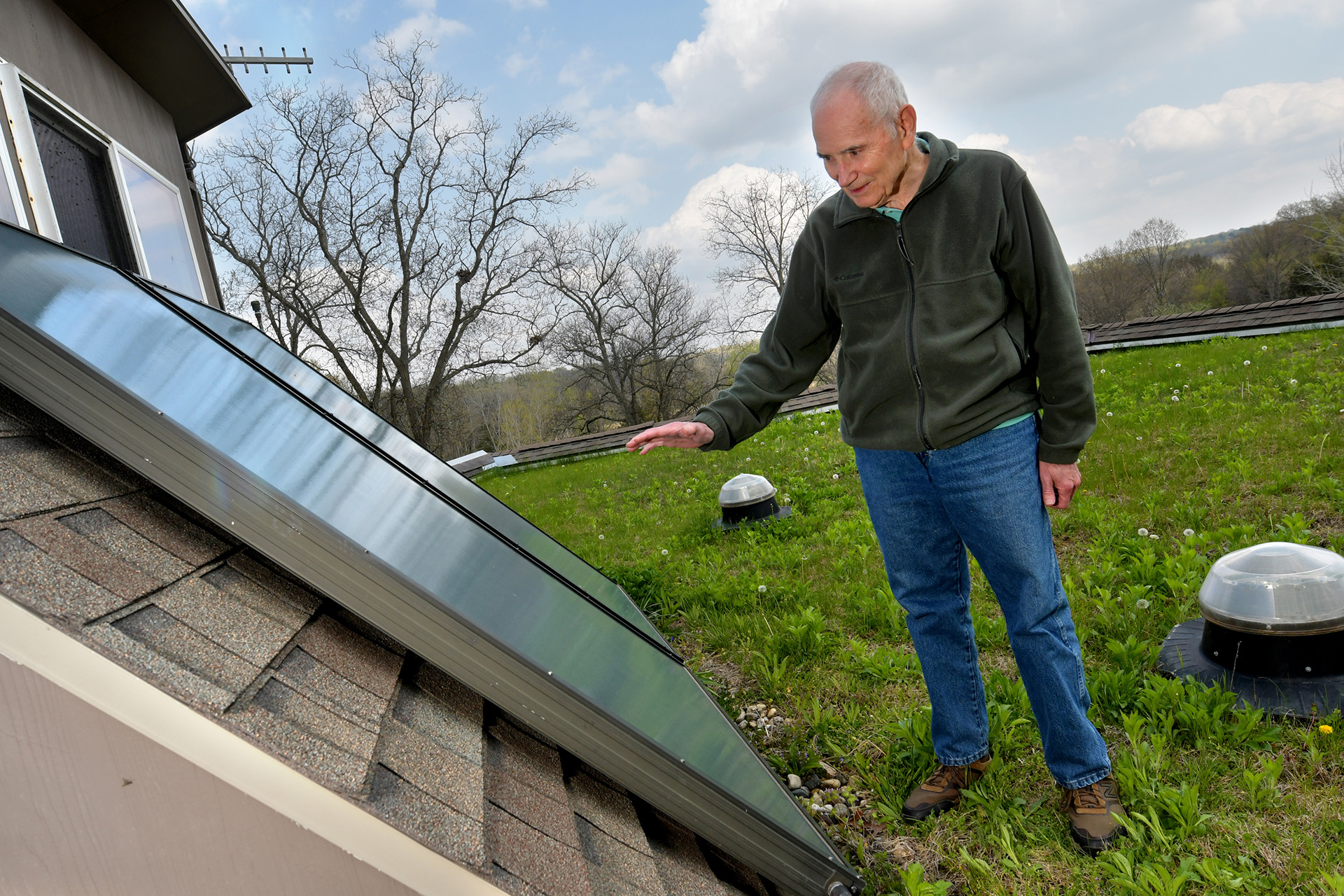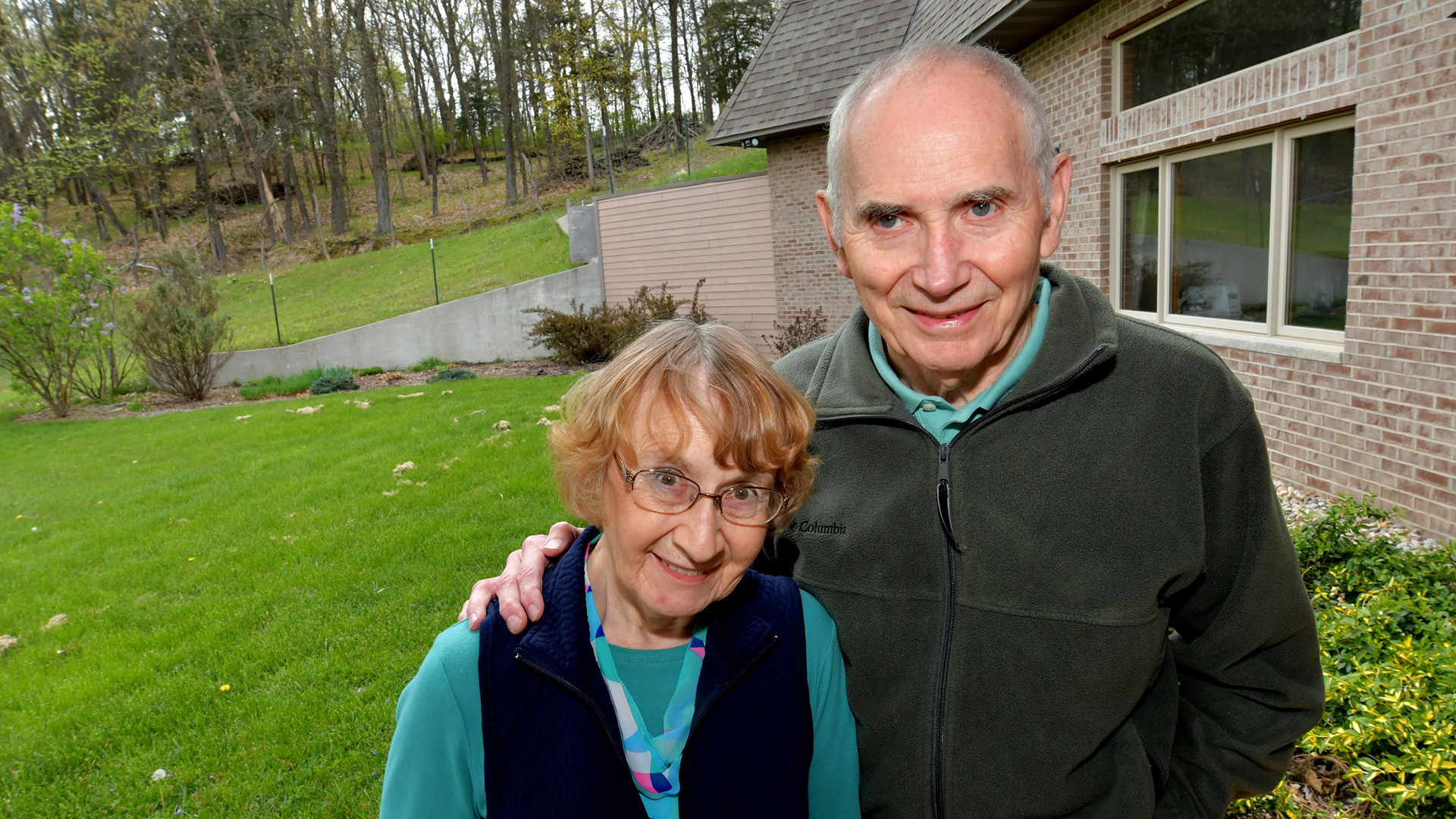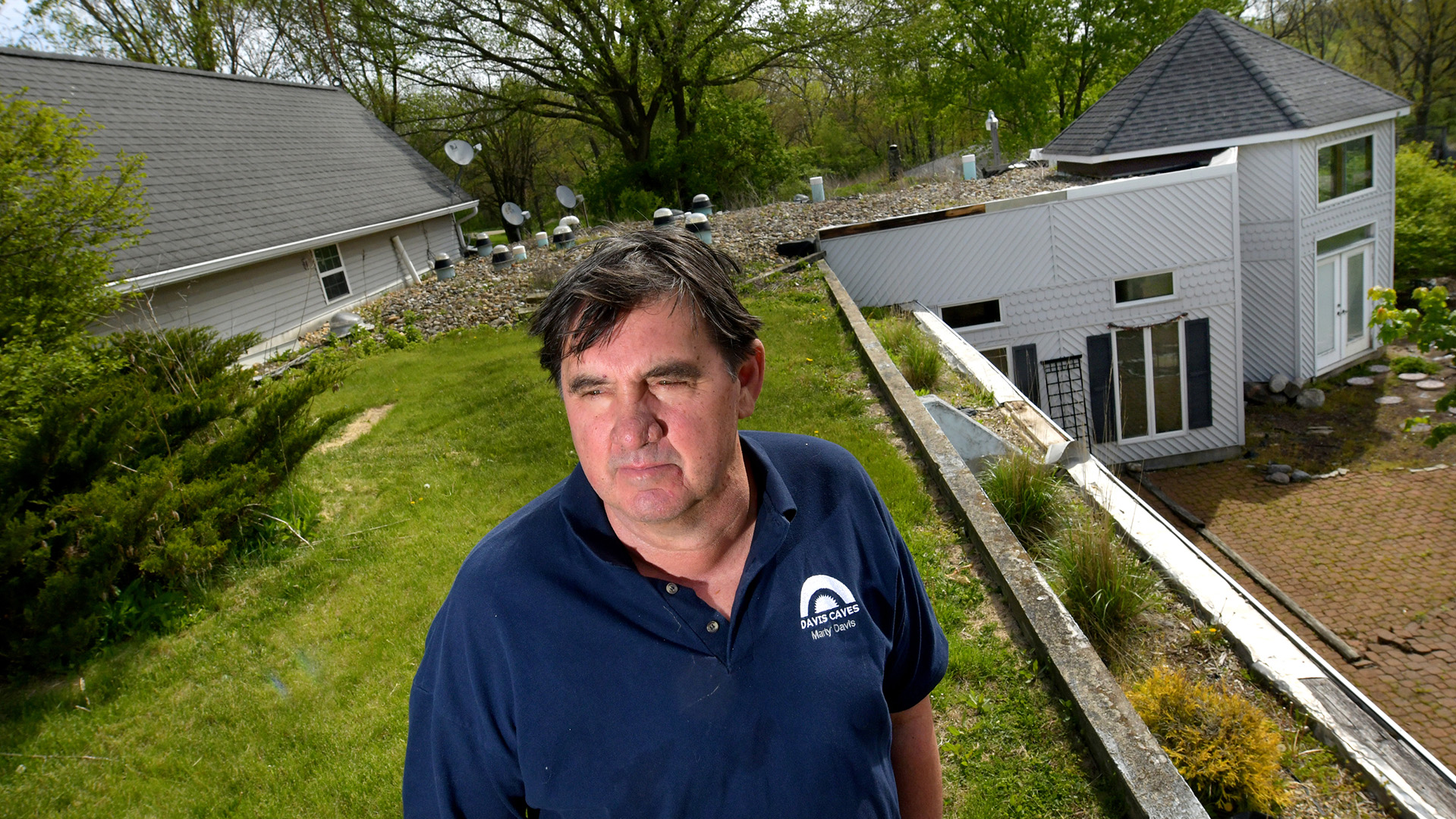Never too hot, never too cold, it’s always just about right – and that includes the utility bills – in a cave home
Since prehistoric times, people and animals have lived in caves.
The dark, damp and sometimes dangerous holes of varying sizes are hardly ideal but can protect you from the elements and predators. You really can’t be picky when carnivores want to make you their next meal!
Now imagine purposely living in a cave in 2023.
More people are doing it thanks to a central Illinois family business that began as one man’s way to save on utility bills.
The 1970s energy crisis saw gas and heating oil prices double and even triple in the U.S., if you could find those products at all. In 1976, a man named Andy Davis in tiny Armington, Illinois, came up with a solution to part of the problem.
“He kind of got the idea that if he could build a house that uses the temperature of the earth and make it comfortable, it would save on heating and cooling,” said Davis Caves owner Marty Davis. “He was paying $400 a month, which would be $1,000 a month now to heat and cool this rental house.”
‘We could leave this house for a full winter, provide no heat and the temperature wouldn’t drop below about 60 degrees’
— Roger Wehage
So, Andy Davis — Marty’s father, by the way — built a new $15,000 home and covered it in soil. It went viral before viral was a thing. National magazines and television news crews descended on Tazewell County. After so much attention, eventually the family started building earth-sheltered homes, what others called “cave homes.”
That first winter, “what the headline said was, ‘Illinois man heats home for $1.29’,” which was the price of “the gas and oil for Dad’s chainsaw to cut wood,” recalled Marty Davis. “He had a Ben Franklin stove. Didn’t have air conditioning, but it stayed cool in the summer.”
Not only has Marty Davis built more than 300 cave homes around the country and as far away as Denmark, he also has raised his family in a 2,000-square-foot cave home. Over the years he has saved 50 percent on natural gas usage and drastically reduced his electricity consumption.

The term “cave home” suggests a dark interior, but light isn’t an issue if you have the right design. At Davis’ house in Logan County, which doubles as a model home, plenty of sunlight comes in the south-facing front windows. Walk up a hill to the grass-covered roof and the secret to naturally lighting the rest of the home becomes apparent: tubular skylights. Inside, it’s hard to tell that only sunlight is illuminating the windowless back rooms. Like many cave homeowners, Davis doesn’t need an air conditioner or a furnace; there’s a wood-burning stove if he needs more heat.

In northern Peoria County, retirees Roger and Pat Wehage spent years researching cave homes and working with Davis Caves before finishing their custom house in 2011. They wanted an efficient home and took it to the next level with large windows, solar energy, wood heating and a heat pump.
“We could leave this house for a full winter, provide no heat and the temperature wouldn’t drop below about 60 degrees all winter, even if it got down to below zero,” said Roger Wehage.
Building a cave home will typically cost more up front because of all the concrete used, but the eventual financial savings are impressive. The Wehages’ electric bill is normally about $10 a month, which pays for the meter. The propane for their kitchen stove and clothes dryer costs less than $100 a year. Solar energy provides more electricity than they need.
Many cave owners are also concerned about the environment, ensuring that greenspace isn’t lost and wildlife isn’t disturbed.
“We did have to make some changes for erosion control, but we tried to build the house so it fit into the environment,” said Pat Wehage. “We wanted to make it fit into the surroundings.”
Cave home proponents say other benefits include:
- Fire resistance, since the structure is mostly concrete and metal studs;
- Protection from tornadoes, lightning, and hail;
- Longevity, since a concrete structure can last hundreds of years;
- Less maintenance, with no roofs or gutters to replace. Exterior and window upkeep is minimal.
No home is maintenance free, of course. Cave owners still cut the grass in their yard … and on the roof!





